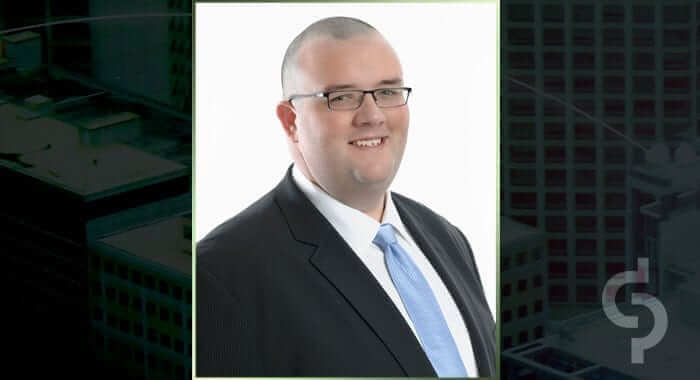For those of you who filed for a Paycheck Protection Program (PPP) Loan, you remember the early days of the application process were marked by conflicting information, short deadlines, potential exposure, and more. As time went by, the regulations loosened up and became clearer, which resulted in benefits for those that waited. Flash forward to now and as Yogi Berra said, “it feels like déjà vu all over again” with the Healthcare Workers’ Bonus program. On Monday, August 29th, additional FAQ’s were posted to the HWB website (the new questions are hi-lighted in yellow). The key updates are:
- The DOH clarified the criteria necessary to be a Qualified Employer to be subject to the HWB program. In determining if a program is eligible there are 4 criteria:
- They are a Medicaid enrolled provider;
- They bill for Medicaid services (either through fee for service, managed care, or a 1915(c) waiver);
- Employ at least one eligible employee;
- Are included in the list of provider and facility types in the statute, OR
- Are subject to a certificate of need (CON) process, OR
- The provider serves at least 20% Medicaid enrollees.
The fourth bullet was modified with the insertion of the word “or” between B and C. The prior NYS Townhall stated that a provider needed to be in the provider/facility list and meet either the CON process or 20%; however the clarification from NYS indicates that a provider only need to meet one of these three criteria. This may mean that you may now be eligible for the program even if you bill Medicaid less than 20% or you are eligible as long as you bill Medicaid 20% or more (which is the case for most early intervention providers).
- The DOH had previously stated that overtime pay and bonuses are not included in the calculation of base pay to determine if an employee’s salary is under $125,000 for bonus eligibility. They have now provided clarification that overtime hours worked should likewise not be included in the calculation of average hours worked for calculation of the applicable bonus amount.
- For hourly employees an employer should use what they were paid over the vesting period times 2 in calculating an employee’s annualized base salary for eligibility purposes. This is a different calculation than is used for the attestation, which is hourly wage x hours worked * 26 weeks.
- While overtime and bonuses are not included in gross pay, differentials (and presumably other stipends) would be included as part of an employee’s gross pay to determine if they exceed $125,000 of annual compensation.
- In order for a qualified “other healthcare support staff” worker to be eligible for a bonus, they must work in a setting where patient care is provided (in essence they need to be program administration not agency administration). Furthermore, the FAQ’s state that an “other healthcare support staff” worker must provide patient-facing care provided within a patient care unit of a hospital or other Article 28 institutional medical setting in support of treating and caring for patients. Based upon this answer, it implies that mental health clinics like Article 16 and Article 31 providers are not eligible for other healthcare support staff as they are not providing services in a medical setting … as there has been a lot of differentiation within the regulations between Medical and Mental Hygiene.
- The FAQ’s now make it clear that contracted staff through staffing arrangements (including PEO’s and other 3rd parties) who are engaged in front-line-hands-on healthcare services in eligible employee titles are eligible for the HWB.
- If multiple employers in a health system have an MMIS ID that is linked, you would look at the linked entities together for determining employee eligibility (hours worked, continuous employment, and salary). If the entities have unlinked MMIS ID’s, then you would not include all employers in determining employer eligibility criteria.
- A qualified employer who is unable to complete their submission of qualified employees in the HWB portal for Vesting Period 1 by September 2, 2022, can submit for Vesting Period 1 during Vesting Period 2.
- Employers should make every attempt to submit claims for Vesting Period 1 as soon as employee is eligible;
- Employers must validate that employee(s) met all other qualifying criteria during the respective vesting period;
- The HWB Portal will be closed for submissions from September 3, 2022 – September 30, 2022, but Providers may submit for Vesting Period 1 during the Vesting Period 2 Submission period which begins on October 1, 2022, and ends October 31, 2022;
- An extension to submit for Vesting Period 1 will be limited to only the submission close date for Vesting Period 2 (October 31st).
- The FAQ’s provide additional clarification as to when a separated employee would be eligible for a bonus with a helpful chart. The clarifications have to do with payment of bonus and separation; in short, an “employer driven” termination post vesting will still require payment however an “employee driven” separation will not require payment.
- The FAQ’s now include questions with respect to enforcement
- If a qualified employer fails to identify, claim, or pay a bonus to an eligible employee they are subject to sanction, up to an including exclusion from the Medicaid program and may be subject to penalty. In addition, the employer is still liable to pay the bonus to the employee.
- Conversely, if an employer erroneously pays a bonus to an ineligible employee, the State can recoup the bonus from the employer who has no recourse against the employee.
In addition, the DOH has added a new slide deck to its website as part of its Town Hall Webinar Series, however, there is no recording posted as of yet to take providers through the slide deck.
Finally, there is also some additional information coming out from other impacted state agencies.
- BEI sent out an e-mail Monday afternoon letting EI providers know that they should direct any questions they have directly to HWB as BEI will not be able to answer any questions posed to them.
NYSED on Friday sent out an implementation memo. NYSED has confirmed that 4410 and 853 providers don’t need to complete the survey discussed in the implementation memo unless they receive an e-mail. In addition, SED has informed the field that the Governor’s Office has confirmed that the list of eligible worker titles on DOH’s website (which can be found here) is final and there will be no additions or changes. This effectively means that teachers and teacher aides/assistants are not covered under this program.
We expect additional clarification over the next few weeks, and we have posed questions of our own to DOH to gain clarification. As new information becomes available, we will keep you informed … stay connected!

Kenneth R. Cerini, CPA, CFP, FABFA
Managing Partner
Ken is the Managing Partner of Cerini & Associates, LLP and is the executive responsible for the administration of our not-for-profit and educational provider practice groups. In addition to his extensive audit experience, Ken has been directly involved in providing consulting services for nonprofits and educational facilities of all sizes throughout New York State in such areas as cost reporting, financial analysis, Medicaid compliance, government audit representation, rate maximization, board training, budgeting and forecasting, and more.

Edward McWilliams, CPA
Partner
Ed is a Partner in the firm’s tax and business advisory practice focusing on providing services to middle market private companies across different industries as well as to early stage startups. Ed has over a decade of experience providing tax and business consulting services to these companies of different sizes and across different industries, bringing a broad and diverse knowledge base and strategic solutions to the many complex issues that businesses face.




No comment yet, add your voice below!